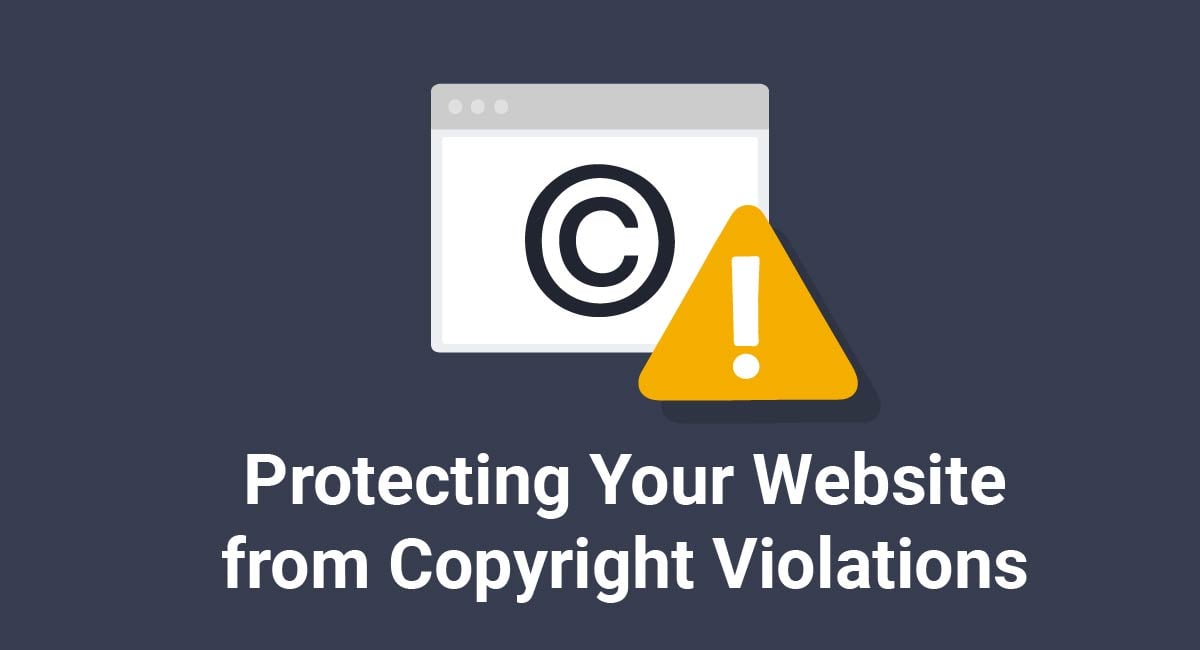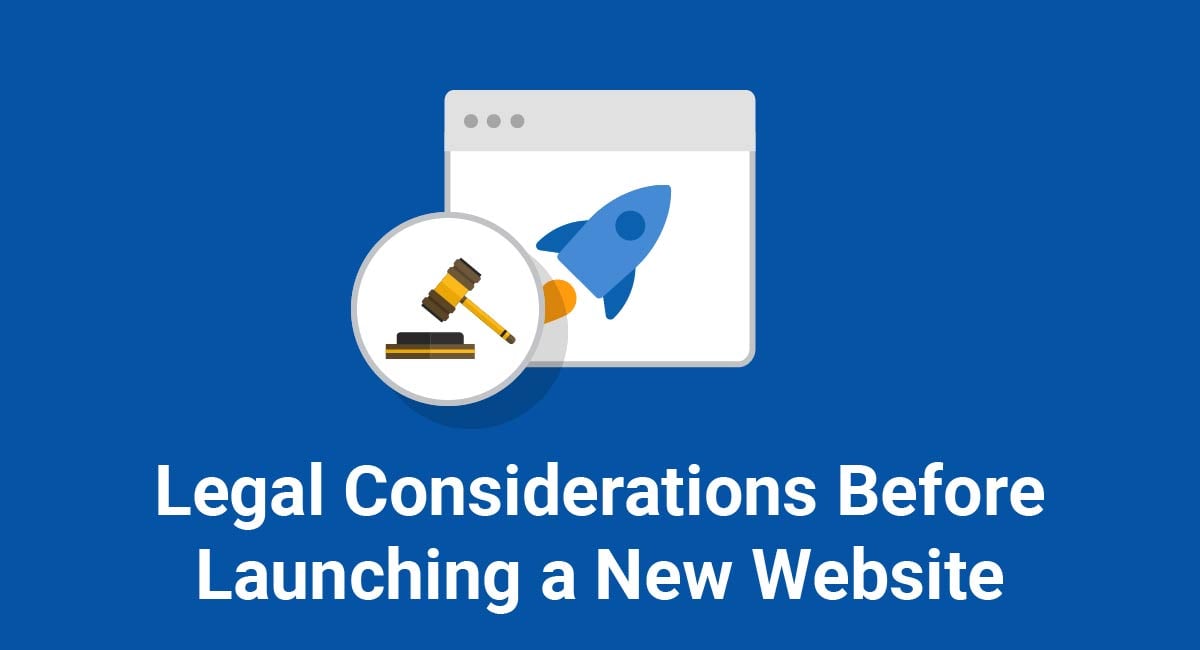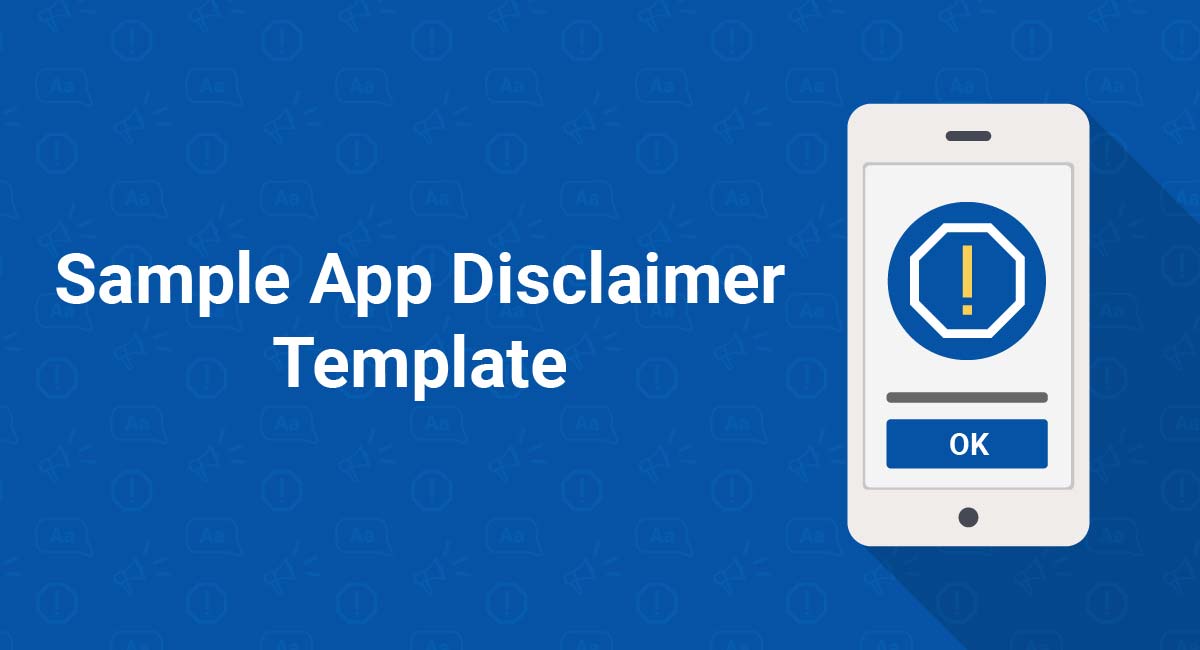Every company that has a website should work to protect its online assets from copyright violations. Safeguarding your brand is essential, so spotting copyright infringement issues and resolving them as soon as possible is a necessity.
Below, we'll take a look at the fundamentals of protecting your website from copyright violations and clue you in to some tips, tricks, and best practices for infringement prevention.
What customers say about TermsFeed:
This really is the most incredible service that most website owners should consider using.
Easy to generate custom policies in minutes & having the peace of mind & protection these policies can offer is priceless. Will definitely recommend it to others. Thank you.
- Bluesky's review for TermsFeed. Read all our testimonials here.
With TermsFeed, you can generate:
- 1. What is Copyright?
- 2. Assume All Works are Protected
- 3. Take Down All Unlicensed Material From Your Website
- 4. Read All Agreements For Copyright Clauses
- 5. Investigate All Claims of Infringement
- 6. Send a Letter in Response to the Infringement Claim
- 6.1. Specific Things to Include in Your Letter
- 6.2. Sample Response Letter
- 6.3. How the Claimant May Respond
- 6.4. What if the Violation Goes to Court
- 6.4.1. The Accusation
- 6.4.2. The Defense
- 7. Always Seek Permission to Use Content From Elsewhere
- 8. What if Someone Infringes on Your Copyright?
- 8.1. Be Sure You've Copyrighted That Material
- 8.2. Collect Evidence of Copyright Infringement
- 8.3. Send a Cease and Desist Letter
- 9. Summary
What is Copyright?
Before you can know whether you or someone else is engaging in a copyright violation, you need to understand what copyright is.
The Merriam-Webster dictionary defines copyright like this:
"The exclusive legal right to reproduce, publish, sell, or distribute the matter and form of something (such as a literary, musical, or artistic work)
E.g., "His family still holds the copyright to his songs."
According to the U.S. government:
"Copyright is a form of protection grounded in the U.S. Constitution and granted by law for original works of authorship fixed in a tangible medium of expression. Copyright covers both published and unpublished works."
Here's an example of a copyright clause in a Terms agreement:
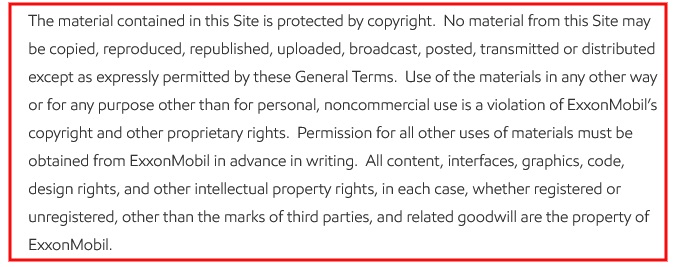
A common fallacy is the notion that someone must place a copyright symbol ( © ) on whatever it is they want to copyright or that they must register it with the U.S. Copyright Office. The truth is that your work is under copyright protection the moment it is created and fixed in a tangible form that it is perceptible either directly or with the aid of a machine or device.
In other words, all created content online is owned by its respective creator and is protected by copyright. Therefore, you cannot use that content on your own website unless you've obtained approval and licensing from the content creator.
Here's an example of a standard copyright notice:
![]()
The U.S. Copyright Office defines copyright infringement as follows:
"As a general matter, copyright infringement occurs when a copyrighted work is reproduced, distributed, performed, publicly displayed, or made into a derivative work without the permission of the copyright owner."
Assume All Works are Protected

One of the first rules you should abide by is assuming that any content which you may come across online and which you didn't create is protected by trademark law or copyright. It's possible that it's not, but you should always assume that it is unless there's documentation proving otherwise.
In other words, don't use content you didn't create or that you don't have specific, written permission to use.
A popular assumption is that works on the internet or that lack a copyright notice are public domain. However, that's not the case. (Note that public domain encompasses creative works to which no exclusive intellectual property rights apply.)
You can also make it clear that your own content is fully protected by using a copyright clause in your Terms agreement, like this one:
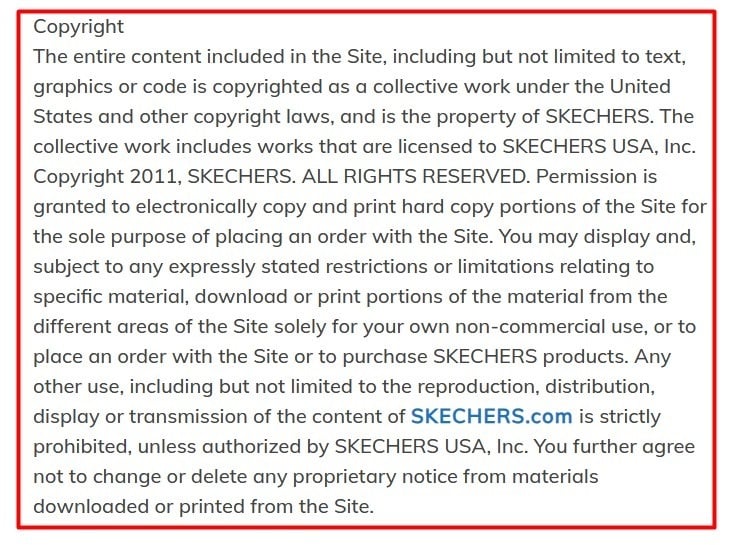
Take Down All Unlicensed Material From Your Website
What should you do if someone claims that you're using their materials?
- Remove that material immediately (unless you're certain that you created it)
- Have the webmaster disable access to the link or material that is causing offense (examples include unauthorized links, uploads, and downloads)
- Consult with an attorney
Here's an example of a clause in a Terms agreement that retains the right to take down content that infringes copyrights:
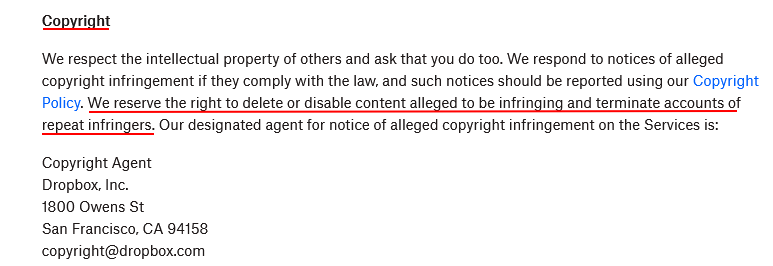
Of course, there are people who make false claims. However, during the time you investigate a claim of copyright infringement, you should protect your website by removing the offending material.
If you find that you must go to court, ensuring that you were proactive and that you stopped using the material in question could go a long way toward keeping you from being held liable.
On the flip side, if you continue using materials that cause you to violate someone's copyright, the damages you might have to pay will be much greater than if you'd removed the offending material right away.
Moreover, the 1998 Digital Millennium Copyright Act (DMCA) notes that business owners can mitigate or avoid liability entirely if they promptly remove infringing material.
Make it clear that you have a process in place for having material reported and taken down, like seen here:
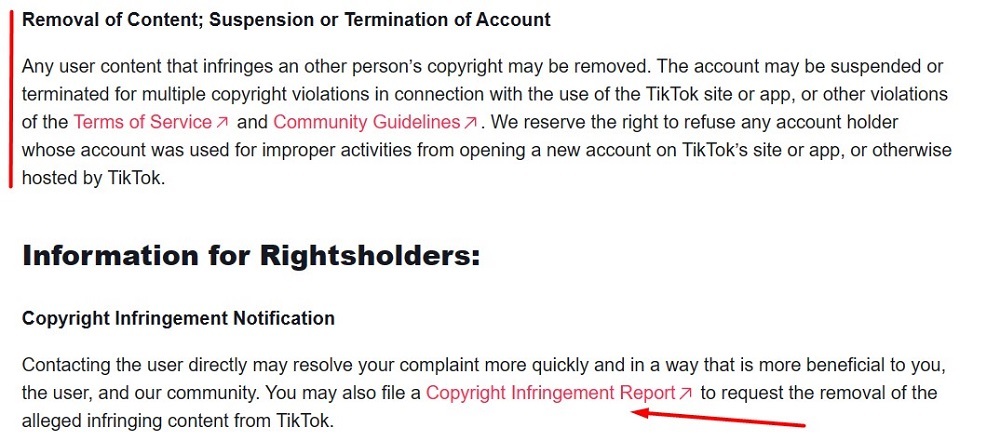
Read All Agreements For Copyright Clauses
There is a lot of material out on the Web, including shareware, freeware, and clip art that you might be tempted to believe is yours to take and distribute or copy without obtaining a license.
After all, it might be labeled:
- Copyright-free, or
- Royalty-free
However, that's not always the case. At least one company was found liable for not honoring terms hidden in a clickwrap agreement, which forbade the distribution of three software clip art volumes.
Investigate All Claims of Infringement

Always investigate a claim of copyright infringement as soon as possible. Do not delay.
Specific issues to investigate are:
- What is the original source of the copyrighted material?
- Did someone at your company purchase the license for the material under their own name?
- Did a third-party contractor (a designer, artist, writer) purchase the license under their own name?
- If you have more than one company, was the license purchased under the name of one of your others?
- Is it possible the material might be listed under a Creative Commons license anywhere online?
- Do you have a record of purchasing a license for the material under your name or the name of your company?
Your webmaster may be able to verify whether the person making a claim is being truthful or not by checking facts through this type of copyright research.
You should also be able to determine who put the offending material on your site and when.
Send a Letter in Response to the Infringement Claim

After conducting your initial investigation into the infringement claim, you should send a letter in response to the infringement claim. You'll send this letter either to the person claiming copyright or to their attorney.
As noted above, it is recommended that you consult your own lawyer about the best way to respond. Remember that not all situations are the same. You'll therefore want to be able to respond in the manner that is suited best for the circumstances surrounding the particular claim against you.
Many people still choose to respond without consulting an attorney. If you choose to do so, there are a couple of things to remember:
- Be professional in your letter
- Recall that anything you put in your letter could potentially be used against you in court
- Do not admit guilt. Don't even hint at an admission. Doing so could cause the license holder to decide they have a case to pursue litigation, and they could use your admission to seek greater damages.
- Assure the license holder that the offending material has been removed from your website
Specific Things to Include in Your Letter
There are a few things that you don't want to leave out of your letter. Address the following things to ensure your letter is as professional as possible:
- Information about the infringement claim
- The legitimacy of the legal copyright holder's claim
- Your defense
- A statement that you've removed the copyrighted material from your company's website
- A proposal for next steps, such as paying them the licensing fee
Sample Response Letter
Stanford University provides a sample letter that should give you a good idea of the sort of thing to put in your own response letter to an infringement claim:
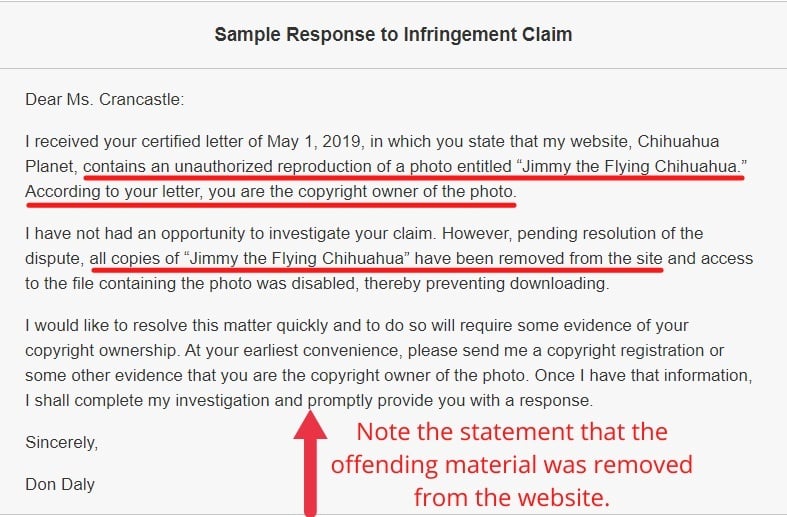
How the Claimant May Respond
Once the claimant receives your response, they must consider it before they choose to take further action.
Even if they don't buy your argument or denial of copyright infringement, they are still expected to lay out their reasons in a follow-up letter to you before heading to court. If they do not do this, they could be penalized by the court themselves.
You may or may not ever hear from the claimant ever again after sending your response to their infringement claim. It's possible that you will hear more when you learn you're being taken to court. Be aware that while the claimant has the right to take you to court, they do not have the right to harass you or pressure you for money.
What if the Violation Goes to Court

Additionally once in court, the onus will be on the claimant to prove their claim against you.
The Accusation
Remember that if someone makes an infringement claim against you and it ends up in court, they will have to prove the following:
- The plaintiff has the legal authority to bring a lawsuit and is the owner of a valid copyright to the material in dispute
- The defendant's work bears a significant resemblance to the copyrighted work, had access to the original work, or the plaintiff possesses direct evidence of the defendant copying the original work, and
- Copyright protects the sections of work that were copied
The Defense
Should you find that you must defend yourself against a claim of copyright violation, there are three common defenses which you have available to you. These include:
- The use of the material in question was fair use. This defense is one that is used most often. Both the Congress and the courts accepted the fair use doctrine to allow copyrighted materials to be used, which are considered "beneficial to society." Many of these types of materials are also protected by the First Amendment to the Constitution. This defense may protect you if your use of the materials in question furthers the public discourse or creates an entirely new work in the process. However, if you've simply copied someone else's work and it can be shown that you're making money from it, then you'll likely end up liable.
- Arguing that the work in question was factual only and did not contain any expressive element. In other words, the work is actually not covered by copyright law.
- Being able to show that you created the material in question. If you can prove this, then it immediately invalidates the plaintiff's claim.
Always Seek Permission to Use Content From Elsewhere
The rule of thumb is that if you didn't create a particular piece of content, you must always seek permission to use it on your website. Whether that includes purchasing a license or signing an agreement, you need to ensure that you're legally covered.
Remember that obtaining written evidence of that permission is essential. While oral consent is considered valid, it is also hard to prove.
What if Someone Infringes on Your Copyright?

To this point, we've talked about keeping your website free of copyright violations. However, what happens if someone uses content you've created without obtaining permission?
In a case like this, you need to decide whether you want the offender only to take the unauthorized material offline or if your business has been harmed if you want to pursue damages (or both).
Be Sure You've Copyrighted That Material
If you haven't copyrighted your website, you should do so through the U.S. Copyright Office. Save all your documentation.
Collect Evidence of Copyright Infringement
You need evidence if you choose to pursue a claim in court. To collect this evidence:
- Make copies of the infringing website
- Take screenshots
- Copy the source (HTML) code for each page
Send a Cease and Desist Letter
Finally, once you've collected your evidence, you need to send the offending party a cease and desist letter. Ideally, it would be best if you had your attorney do this.
If you choose to write this letter yourself, then you must ensure that you do not threaten the offending party with anything other than legal action. Additionally, it would be best if you didn't threaten legal action unless you are actually prepared to take it.
Your letter should include the following:
- Details on what the copyrighted materials are
- A list of the materials the infringer has displayed/used without your permission
- A deadline for the infringer to stop using your materials
- A statement that you intend to pursue legal action if the infringer doesn't remove the offending material by the deadline

Be sure that you've collected evidence against the infringer before sending the Cease and Desist letter. If you fail to do this, the offending party could change elements of their site, which could make proving your case in court much harder.
Summary
There are a number of things you can do to protect your website from copyright violations. By being proactive and letting users report copyright violations, investigating them timely, and removing such content from your platform, you will help avoid many copyright violation issues that could escalate.
If someone is violating copyright on your platform by posting material that they don't have the rights to, take steps to disable the user's account and remove the violating content.
If someone is found to be violating your content's copyright by stealing your intellectual property and posting it elsewhere, send a cease and desist letter. Your content is automatically given copyright protection under U.S. law, and you have copyright protection.

Comprehensive compliance starts with a Privacy Policy.
Comply with the law with our agreements, policies, and consent banners. Everything is included.
